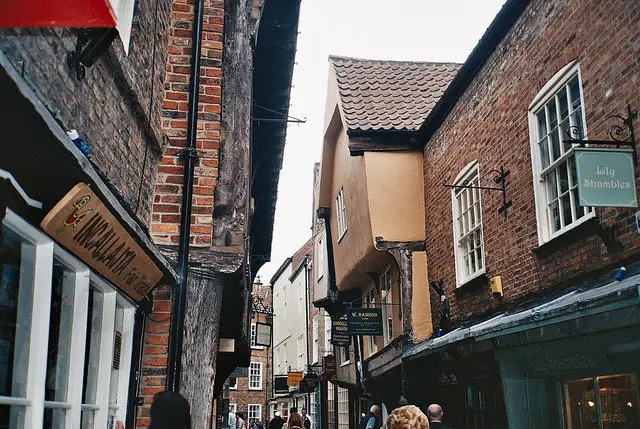You don’t need a time machine to experience the medieval charm of an English street straight out of the past. Just head to the city of York and take a leisurely walk along “The Shambles,” which is famously referred to as “Europe’s best preserved street.” This charming cobblestone street in the heart of York has rightfully earned its reputation. It’s like a living history book, still cherished by modern-day tourists who value its genuine old-world atmosphere. The fact that this street was mentioned in the Domesday Book back in 1086, a record commissioned by William the Conqueror, proves its agelessness. Its origins go way, way back.
Now, beyond being a name, “shambles” is an interesting term. It describes a network of narrow, winding streets and alleys that weave together like a maze. It was also used to describe streets where butchers sold their meat. The word traces its roots to the Anglo-Saxon term “shamel,” which literally means a meat-selling stall. That’s where the word comes from. Over time, it evolved into “flesshamels,” referring to shelves for meat – a central feature of pretty much every butcher’s shop.
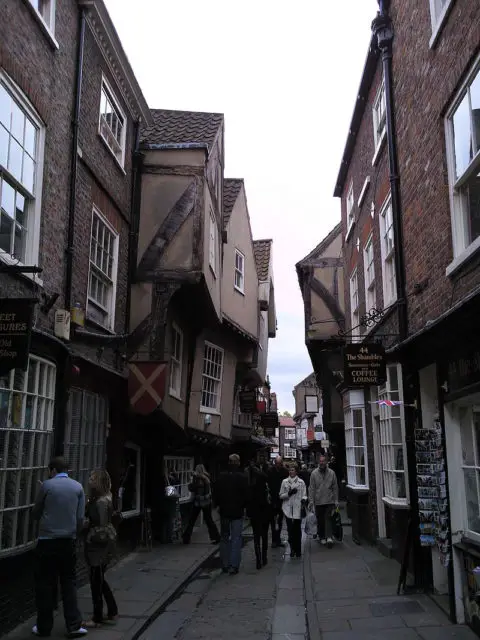
Let’s focus on what The Shambles was really about – it was the bustling hub for the main meat market in the York region. Butchers would proudly showcase their cuts every week in this market. Along this stretch, you’d find a string of butcher shops and houses, some even had slaughterhouses at the back.
Customers would pick out their meat portions from the front of these houses, indicating a well-organized system to ensure a steady supply of fresh meat. Meat would be hung out in front of shops or displayed on window sills. And believe it or not, a few original butcher’s hooks still hang outside or below the windows of the shops if you look closely.
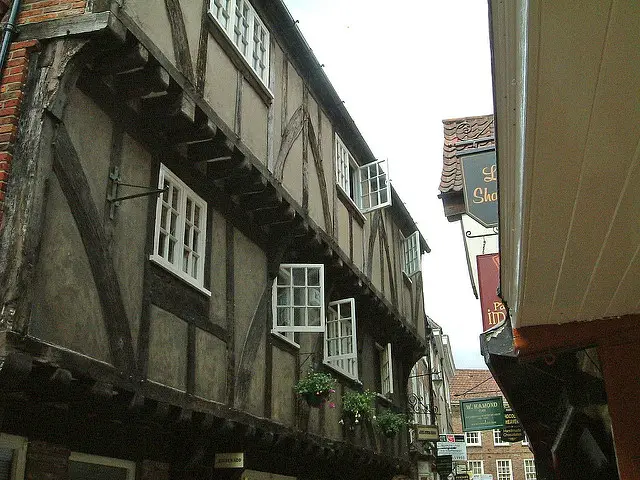
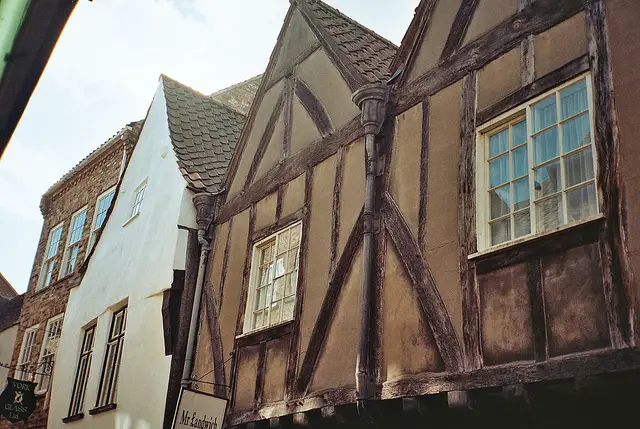
With over 30 butcher shops around The Shambles in the 1800s, dealing with the waste like offal and blood was a challenge. Since York lacked a modern sewage system, the waste from the animals had to be cleared at least twice a week through a canal at the side of the pavement. As you walk through this area, you’ll get a close look at the architecture dating back to the 14th century. The buildings’ timber-framed roofs almost seem to touch one another, leaning towards the center of the street as if they’re reaching out to their opposite neighbors.
Interestingly, this positioning created shadows on the walls below, protecting the meat from direct sunlight and heat. One building that stands out among the gems is the residence of Saint Margaret Clitherow, often called the “Pearl of York.” Margaret was arrested for hiding Catholic priests and religious garments in her home. Although she wasn’t canonized until later, her house was transformed into a shrine in the 1970s.
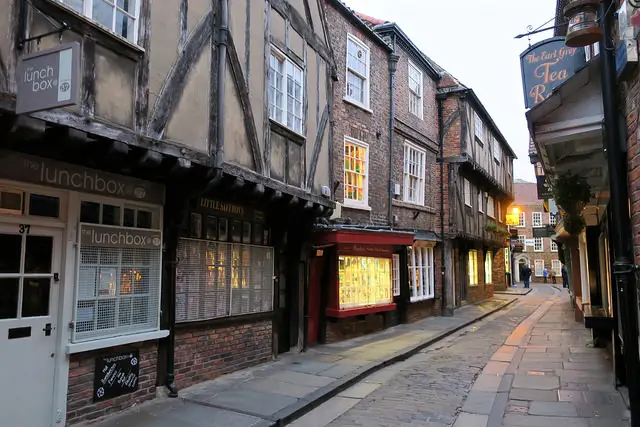
The Shambles, once a home to cafes, boutiques, restaurants, and souvenir shops that occupied former butcher’s spaces, now houses a different array of businesses. The smaller shops are on the lower levels of these buildings, with the upper levels jutting out over them.
